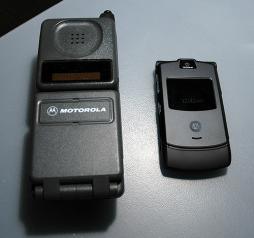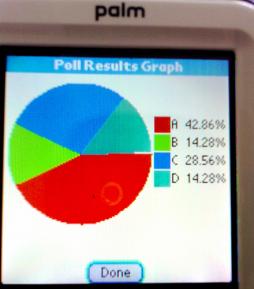mobile usage
Posted by AnneryanHeatwole on Sep 08, 2011
In a report on worldwide trends in mobile usage, Wireless Intelligence investigates the relationship between decreased prices of call times and the related increase in mobile usage around the world over the last decade. "Analysis: How Pricing Dynamics Affect Mobile Usage" looks at both developed and developing countries to see where call prices have changed most dramatically in the last ten years, and how those changes have affected call times and mobile usage. Although the full report is restricted to Wireless Intelligence members, some of the key data is summarized below.
Posted by MohiniBhavsar on Sep 28, 2010
Mobile Phone Use by Young Adults in India: A Case Study data sheet 4534 Views
Abstract:
This study explored the use of mobile phones among young adults in India. The study used the theoretical frameworks of uses and gratifications approach from media studies, socialcognitive domain theory from human development literature and social construction of technology (SCOT) from Science and Technology studies. The main objective of the study was to examine the use of mobile phones to fulfill communication, media and age-related needs by young people in India and to investigate regional and gender differences.
The study was conducted in two phases using a mixed-methods approach. In the first phase, in-depth interviews were conducted with 30 college-going young adults (18 – 24 years) in Mumbai and Kanpur in December 2007 and January 2008. In the second phase, a survey was conducted with 400 college-going young adults (18 – 24 years) in Mumbai and Kanpur.
The qualitative analysis of the data showed that young people in both the cities used cell phones for a variety of communication, news and entertainment needs. Additionally, they considered cell phones as personal items and used them to store private content, maintain privacy and have private conversations. Further, the analysis showed that they used cell phones to negotiate independence from parents and to maintain friendships and create friendships with members of opposite sex.
The quantitative analysis of the data revealed that young people in the two cities used cell phones differently due to the differences in their lifestyles and socio-cultural factors. Additionally, the study found there were only a few gender differences in the use of cell phones by young people, mainly in the use of cell phones for entertainment purposes, negotiation of independence from parents and in forming friendships with members of opposite sex. Finally, the study concluded that young people in India mainly use cell phones for private communication and needs.
Posted by MohiniBhavsar on Aug 03, 2010
Can the Poor Afford Mobile Telephony? Evidence from Latin America data sheet 2079 Views
Author:
Roxanna Barrantes and Hernán Galperin
Abstract:
This study analyses the cost of a low-volume basket of mobile services across a sample of Latin American countries, and contrasts these results with standard income and poverty indicators. The main goal is to establish how affordable mobile services are for the poor.
Three general findings emerge. First, the poor generally pay a cost premium for using prepaid subscriptions that allow better expenditure control, though in many cases this premium is much lower than expected.
Second, affordability is an important predictor of mobile penetration. Overall, while affordable handsets and the callingparty-pays system allow a significant number of low-income Latin Americans to become mobile subscribers, the results reveal that the current tariff structure has an inhibiting effect on service consumption by the poor.
Third, since affordability is the most significant barrier to extending the reach of mobile services, as well as the range of services used by the poor, priority should be placed on policies aimed at reducing tariffs and stimulating the introduction of commercial innovations for low-income groups.
Posted by MohiniBhavsar on Aug 03, 2010
Mobile Opportunities: Poverty and Mobile Telephony in Latin American and the Caribbean data sheet 2287 Views
Author:
Hernán Galperin, Judith Mariscal
Abstract:
Access to telephony for low-income groups is largely based on different strategies of mobile telephony usage. The main goal of this research project is to explore the strategies employed by the poor in Latin America and the Caribbean to access and use mobile telephony services, as well as to identify the major market and regulatory barriers for increased penetration and usage. More generally, it seeks to contribute to the discussion on how access to mobile telephony contributes to improving the livelihoods of the poor –what we call mobile opportunities.
Our results show that mobile telephony is highly valued by the poor as a tool for strengthening social ties and for increased personal security, and that it is beginning to prove useful for enhancing business and employment opportunities. Overall, the survey results suggest that the acquisition of mobile phones by the poor has an economic impact reflected mainly in improved social capital variables such as the strengthening of trust networks and better coordination of informal job markets. These findings reveal the continued need to develop innovative business models that extend the market frontier for mobile telephony. They also highlight the urgent need to rethink public policies that are premised on the mobile phone as a luxury good. Clearly, for the poor, mobile telephony has long been the most cost-effective and accessible alternative.
Posted by PrabhasPokharel on Mar 09, 2010
Broadband Use and Adoption in America data sheet 2260 Views
Abstract:
The FCC conducted a survey of 5,005 Americans in October and November 2009 in an effort to understand the state of broadband adoption and use, as well as barriers facing those who do not have broadband at home. Pages 21-23 contain data about mobile usage.
The report indicates that 86 percent of American adults own a cell phone, and 30% use their devices to access the mobile web. In contrast, 66% have sent or received text messages. The numbers are higher for minorities; 36% of African-American and Hispanic users use their devices to access the mobile web. There is also a generational gap; 48% of those 19-29 access the mobile web, compared to only 5% of those over 65.
Posted by AnneryanHeatwole on Nov 10, 2009
India's Rural Millions: Findings From a Six-Country Study of Teluse at the Bottom of the Pyramid data sheet 2738 Views
Abstract:
Presentation to the Cellular Operators Association of India with current LIRNE Asia data on ICT use (including mobile) at the bottom of the economic pyramid. Ongoing work of LIRNE Asia.
Posted by KatrinVerclas on Jan 02, 2008
Happy New Year, MobileActives!
To ring in the New Year, MobileActive is conducting, with the UN Foundation and the Vodafone Group Foundation, a global survey of more than 25,000 civil society groups about how these organisations are using mobile phones in their work.


